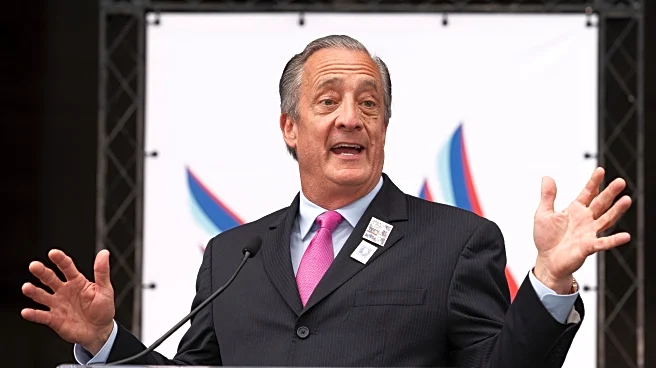What's Happening?
The U.S. Postal Service (USPS) reported a net loss of $9 billion for fiscal 2025, continuing a trend of financial challenges despite efforts to modernize operations. Postmaster General David Steiner, who took office in July, has decided to maintain the
modernization plan initiated by his predecessor, Louis DeJoy, despite calls from stakeholders and lawmakers to pause the initiative. The plan, known as Delivering for America, aims to promote financial sustainability by slowing delivery and increasing product prices. However, critics argue that it exacerbates USPS's financial woes. Steiner emphasized the need for legislative and executive actions to stabilize USPS finances, including removing investment restrictions and raising the statutory debt limit.
Why It's Important?
The ongoing financial losses at USPS highlight the challenges faced by the agency in achieving financial stability. The modernization plan, while intended to improve efficiency, has been criticized for worsening performance without delivering financial benefits. The situation underscores the need for comprehensive reforms and legislative support to address USPS's financial issues. The agency's financial health is crucial for maintaining reliable mail services across the country, impacting businesses and consumers who rely on USPS for deliveries. The debate over the modernization plan reflects broader concerns about the agency's future and the need for strategic changes to ensure its sustainability.
Beyond the Headlines
The USPS's financial struggles and modernization efforts raise questions about the balance between cost-cutting measures and growth strategies. Steiner's vision of expanding 'last mile' services and partnerships with other agencies suggests a focus on growth rather than solely reducing costs. The departure of board member Roman Martinez IV, leaving five openings, highlights governance challenges and the need for diverse expertise to guide USPS's strategic direction. The agency's financial health is not only a matter of operational efficiency but also involves broader policy considerations, including potential legislative changes to support its long-term viability.














